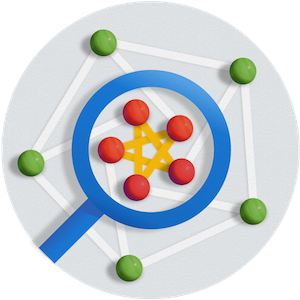Our team comprises multiple overlapping research groups working on graph mining, large-scale optimization, and market algorithms. We collaborate closely with teams across Google, benefiting Ads, Search, YouTube, Play, Infrastructure, Geo, Social, Image Search, Cloud and more. Along with these collaborations, we perform research related to algorithmic foundations of machine learning, distributed optimization, economics, data mining, and data-driven optimization. Our researchers are involved in both long-term research efforts as well as immediate applications of our technology.
Examples of recent research interests of the NYC Algorithms and Optimization team include online ad allocation problems, distributed algorithms for large-scale graph mining, mechanism design for advertising exchanges, and robust and dynamic pricing for ad auctions.
Take a look at our publications and recent Research Seminars.



Almost Optimal Streaming Algorithms for Coverage Problems
Mohammadhossein Bateni, Hossein Esfandiari, Vahab Mirrokni
29th ACM Symposium on Parallelism in Algorithms and Architectures (2017)
Budget Management Strategies in Repeated Auctions
Santiago R. Balseiro, Anthony Kim, Mohammad Mahdian, Vahab S. Mirrokni
WWW (2017), pp. 15-23
Computing Walrasian Equilibria: Fast Algorithms and Structural Properties
Renato Paes Leme, Sam Chiu-wai Wong
ACM-SIAM Symposium on Discrete Algorithms (SODA 2017) (2017)
Dynamic Mechanisms with Martingale Utilities
Santiago Balseiro, Vahab Mirrokni, Renate Paes Leme
ACM EC (2017)
Consistent Hashing with Bounded Loads
Vahab Mirrokni, Mikkel Thorup, Morteza Zadimoghaddam
Proceedings of the Twenty-Ninth Annual ACM-SIAM Symposium on Discrete Algorithms (2018), pp. 587-604
Distributed Balanced Partitioning via Linear Embedding
Kevin Aydin, Mohammadhossein Bateni, Vahab Mirrokni
WSDM 2016: Ninth ACM International Conference on Web Search and Data Mining, ACM (to appear)
Maxime Cohen, Ilan Lobel, Renato Paes Leme
Proceedings of the 2016 ACM Conference on Economics and Computation
Oblivious Dynamic Mechanism Design
Vahab Mirrokni, Renato Paes Leme, Pingzhong Tang, Song Zuo
SSRN (2016)
Expanders via Local Edge Flips
Zeyuan Allen-Zhu,, Aditya Bhaskara, Silvio Lattanzi, Vahab Mirrokni, Lorenzo Orecchia
Society for Industrial and Applied Mathematics (2015), pp. 259-269
Online Submodular Welfare Maximization: Greedy Beats 1/2 in Random Order
Nitish Korula, Vahab S. Mirrokni, Morteza Zadimoghaddam
STOC (2015), pp. 889-898
Randomized Composable Core-sets for Distributed Submodular Maximization
Vahab S. Mirrokni, Morteza Zadimoghaddam
STOC (2015), pp. 153-162
Robust Price of Anarchy Bounds via LP and Fenchel Duality
Janardhan Kulkarni, Vahab S. Mirrokni
SODA (2015), pp. 1030-1049
Polyhedral clinching auctions and the adwords polytope
Gagan Goel, Vahab Mirrokni, Renato Paes Leme
STOC, ACM (2012), pp. 107-122
Online Stochastic Matching: Beating 1-1/e
Jon Feldman, Aranyak Mehta, Vahab Mirrokni, S. Muthukrishnan
Symposium on the Foundations of Computer Science (FOCS) (2009)